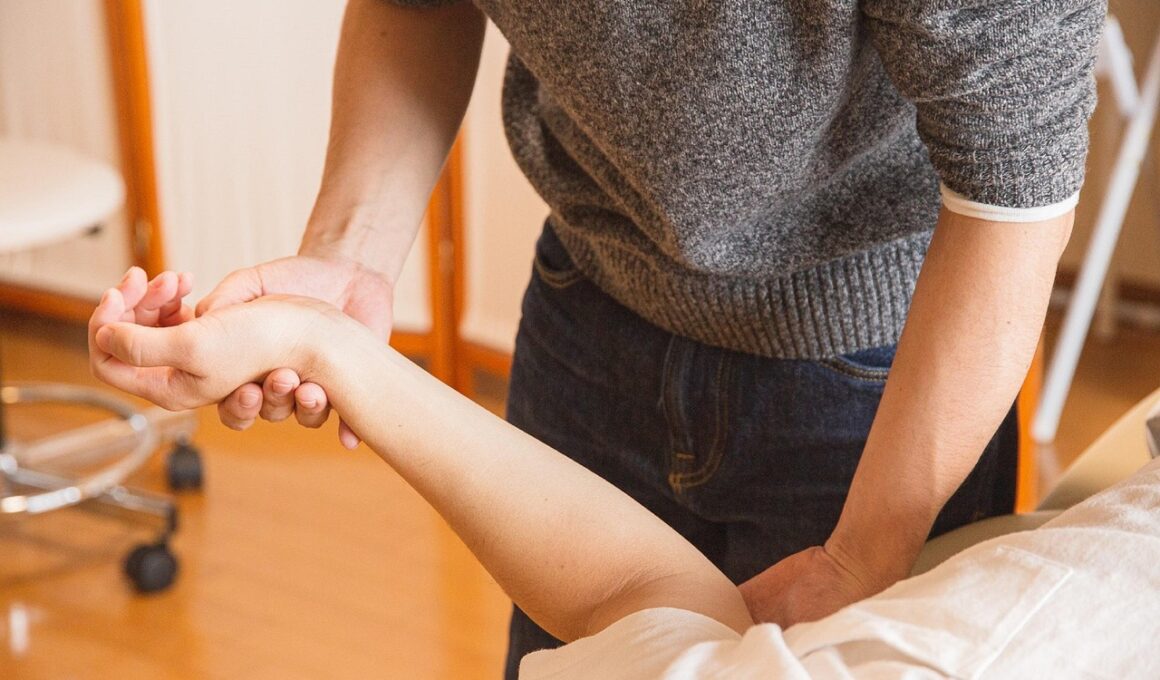Cryotherapy in Preventing Sports Injuries: What You Need to Know
Cryotherapy refers to the local or general use of low temperatures in medical therapy. When it comes to sports injuries, utilizing cryotherapy has gained traction for its effective preventive properties. Athletes frequently engage in high-intensity training, which increases the potential for injury. Cryotherapy works by numbing the affected area, reducing inflammation, and accelerating recovery time. Applying cold treatment can constrict blood vessels to minimize swelling and soreness, which may arise after rigorous activities. This is particularly beneficial during a training camp or match season. Several studies show that implementing cryotherapy sessions before and after workouts can maintain peak performance levels while reducing the chances of injuries such as strains and sprains. Athletes that regularly engage in cryotherapy have reported less muscle stiffness, allowing for better range of motion. Furthermore, when combined with other recovery modalities, such as compression therapy, the benefits are amplified tremendously. Considering each athlete’s specific needs and injury history is vital. A combination of therapies creates a robust injury prevention strategy that every sportsperson should consider.
Moving forward, it’s essential to understand how cryotherapy complements heat therapy and why the conjunction of both is advantageous. While cryotherapy involves extreme cold, heat therapy focuses on dilating blood vessels, enhancing blood flow, and relaxing muscles. Alternating between cryotherapy and heat therapy can stimulate recovery and injury prevention. For example, starting with cold treatment can decrease inflammation effectively. Meanwhile, following up with heat treatment helps relax the tissues and improves nutrient flow to damaged areas. This combination can also facilitate the removal of metabolic waste products from a strenuous workout. Athletes report that this harmonious application allows them to maintain higher training standards while experiencing fewer injuries. Additionally, alternating temperatures can stimulate the body’s natural healing processes, leading to improved performance outcomes. Athletes use this approach based on their particular circumstances, and high-performance coaches are becoming increasingly aware of its immense advantages. Overall, adopting this dual therapy method can enhance an athlete’s dedication to injury prevention more noticeably than choosing between the two options alone. Creating a balanced routine supports the longevity of athletic careers.
Besides direct physical effects, psychological benefits also constitute an important factor in recovery. Understanding the mind-body connection becomes significant, especially in sports. Cryotherapy can have drastic effects on mood, energy levels, and perceived exertion after workouts. Athletes who undergo regular cryotherapy report improvements in their mental clarity and are better prepared for competitions. Reduced inflammation also ties into emotional well-being and fear of injury. When athletes feel physically strong and secure, they tend to perform better, resulting in increased confidence in their abilities. Furthermore, cold therapy releases endorphins, which are natural mood lifters. Additionally, a supportive community or team that practices recovery strategies collectively fosters a stronger bond, ultimately improving overall performance. The mental clarity achieved through cold treatments can also assist athletes in focus during high-pressure situations. Managing anxiety levels or fear of injury is crucial during pivotal matches. A prepared mind and body lead to improved athletic performance, demonstrating that effective recovery strategies can encompass physical, emotional, and psychological elements. Balancing such a holistic approach is essential in the quest for preventing sports injuries.
Establishing a Routine with Cryotherapy
Establishing a recovery routine with cryotherapy can significantly contribute to an athlete’s overall performance. Instead of handling treatments arbitrarily, scheduling regular sessions throughout the week ensures that the body is continually in a state of recovery and strength maintenance. Many professionals recommend two to three sessions per week, strategically placed around their training schedule. Timing can influence the effectiveness of cryotherapy, so taking advantage of these sessions immediately after workouts maximizes benefits. Additionally, athletes should logically include cryotherapy when getting ready for important competitions. Understanding the significance of pre-and post-event treatments allows athletes to plan accordingly. Combining cryotherapy with other recovery practices, such as stretching or foam rolling, is also effective. Research has shown the synergy between these recovery methods yields excellent results. Listening to one’s body each day can guide athletes in knowing when to opt for additional treatments. Being aware of fatigue signals prevents overtraining, thus minimizing injury prevalence. Overall, achieving optimal recovery through consistent cryotherapy can heighten sports participation enjoyment while fortifying athletes’ resilience against injuries.
The safety of cryotherapy is worth mentioning because concerns have been raised about practices surrounding the treatment. When performed correctly, cryotherapy is generally safe; however, athletes must seek qualified professionals to ensure proper techniques and protocols are adhered to. Careful consideration should also be given to any pre-existing conditions, as certain injuries might not respond well to cold treatment. Consulting with a medical professional who specializes in sports medicine allows for personalized recommendations tailored to an athlete’s unique situation. Additionally, maintaining caution during self-administered methods, such as ice baths or cold packs, is essential to prevent ice burns or tissue freezing. Following guidelines for durations and temperatures ensures that athletes gain the benefits without complications. Jumping into extreme practices without sufficient knowledge increases injury risks. Therefore, thorough research into cryotherapy providers, their qualifications, and potential risks can safeguard athletes seeking recovery options. By educating themselves about cryotherapy’s benefits and limitations, athletes can ultimately foster effective prevention strategies for sports injuries and enhancing overall athletic performance.
The Role of Cryotherapy in Recovery Plans
Integrating cryotherapy into comprehensive recovery plans enhances the effectiveness of athletes’ strategies. It is crucial to tailor recovery methods to specific sports and injury types. A one-size-fits-all approach may overlook individual needs and practices. Collaboration with physiotherapists or trainers can yield optimal results. They can assess athletes’ training regimens and determine where cryotherapy fits into their schedules without interfering with performance. Additionally, implementing regular assessments can help track recovery progress ensuring that methods are working as intended. This can also guide modifications when necessary. Crucially, athletes should keep detailed records of treatment sessions. This helps pinpoint the most beneficial routines and can positively influence long-term performance. Moreover, addressing nutrition and hydration alongside recovery methods is essential for elevating athletes’ recovery capabilities. A holistic approach to injury prevention involving nutrition, mental preparation, and recovery methods often yields the best results. Cryotherapy complements these various aspects by enhancing fitness and performance. Athletes committed to injury prevention recognize the proactive nature of combining techniques to truly optimize their output during competitions.
Ultimately, it is essential for athletes to stay informed about the latest research surrounding cryotherapy and its applications in sports. As the field of sports science evolves, valuable insights continually emerge regarding its effectiveness. With an increased understanding of how to harness its benefits, harm reduction strategies can be effectively developed, ensuring that injury prevention remains a priority. Staying engaged in current trends, emerging studies, and evidence-based practices allows athletes to optimize their training regimen optimally. Online resources, seminars, and workshops provide avenues for athletes to learn from experts in the field. Engaging actively in discussions enhances knowledge sharing and leads to further advancements in the realm of athlete recovery. Moreover, connecting with other athletes who benefit from cryotherapy can provide valuable anecdotal evidence that promotes trust in this practice. Networking within the community encourages individuals to collaborate and share techniques, ultimately improving their experiences. Not only does consistent education enhance athletes’ understanding of cryotherapy, but it also influences their overall preparedness. By recognizing the importance of integrating cryotherapy into their training and recovery routines, athletes can enhance their performance and reduce injuries efficiently.


